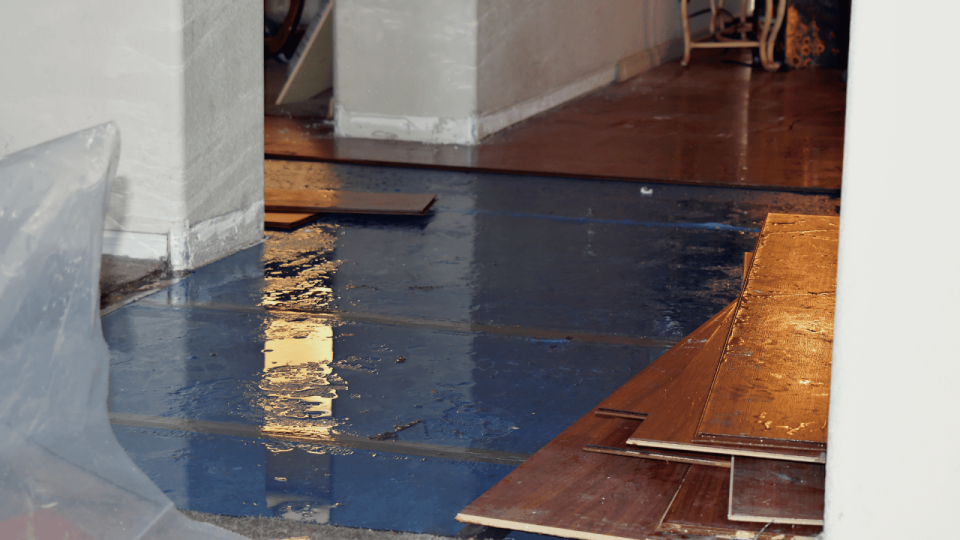Water damage can be a stressful and overwhelming experience for homeowners, but being prepared can make the water removal and restoration process smoother and more efficient. Taking immediate action not only minimizes damage but also ensures that professional restoration teams can work as quickly as possible when they arrive. Here’s a comprehensive guide to help you prepare your home for the water removal process.
1. Turn Off Water and Electricity
One of the first things you should do when you notice water damage is to turn off the main water supply to stop any additional water from flooding your home. This is particularly important in cases of burst pipes or appliance malfunctions. Once the water is stopped, it’s also crucial to shut off the electricity to any affected areas. Water and electricity are a dangerous combination, and turning off the power reduces the risk of electrical shocks or fires. Avoid entering standing water areas where electrical outlets or devices are present until you’re sure the power is off.
2. Document the Damage
Before any cleanup or removal begins, document the damage thoroughly for insurance purposes. Use your smartphone or camera to take photos and videos of the affected areas, including damaged furniture, flooring, and walls. Capture any standing water, wet spots, and areas where water is actively seeping in. This documentation will be important when you file an insurance claim, as it will help demonstrate the extent of the damage and justify any claims for repair costs.
Keep in mind that insurance adjusters may not visit immediately, so this early evidence will be essential in ensuring you receive appropriate compensation for repairs.
3. Remove Valuable Items and Furniture
Once the area is safe, remove any valuable or salvageable items from the affected areas. This might include furniture, electronics, important documents, and personal items. If the items are wet, dry them off as much as possible and relocate them to a dry area. For large furniture or carpets that can’t easily be moved, placing them on blocks or propping them up can prevent further damage.
Items like rugs, curtains, and cushions that have absorbed water should be removed to prevent mold growth. If your carpets are wet, avoid walking on them to minimize damage and ensure the fibers can be restored.
4. Protect Yourself from Contaminants
Depending on the cause of the water damage, there may be harmful contaminants present in the water. Water from sewage backups, floods, or storm surges can carry bacteria, chemicals, and other hazardous materials. If you’re dealing with contaminated water, wear protective gear such as gloves, rubber boots, and a mask. It’s also important to ventilate the area by opening windows and using fans to circulate fresh air.
Do not attempt to remove sewage-contaminated water yourself; professional teams have the specialized equipment necessary to handle biohazardous waste safely.
5. Ensure Access for Restoration Teams
Once you’ve taken immediate steps to secure your home and protect valuable items, it’s important to ensure that the water restoration team has clear access to the damaged areas. Remove any obstacles or debris from hallways, driveways, and entrances so that the team can quickly bring in their equipment and start the water extraction process.
If possible, keep the damaged areas isolated from unaffected parts of the house. This can prevent the spread of water, mold, or contaminants to other areas. Sealing off rooms or using towels or barriers can help contain the damage while you wait for the professionals.
6. Understand What to Expect in the Water Restoration Process
Being familiar with what happens during the water removal process can help you prepare mentally and physically for what’s ahead. The first stage typically involves the use of specialized pumps and vacuums to remove large amounts of standing water. Once the excess water is removed, powerful fans and dehumidifiers are brought in to thoroughly dry the area, which helps prevent mold growth and further structural damage.
After the drying process, the team will assess the full extent of the damage. Depending on the severity, they may need to remove damaged drywall, flooring, or insulation. Carpets may need to be cleaned or replaced, and any remaining moisture will be addressed through advanced drying techniques.
In some cases, additional treatments like mold remediation or odor removal might be necessary. Professional restoration teams will also disinfect and sanitize the area to ensure it’s safe for you to return to your home.
7. Communicate with Your Insurance Provider
While the water removal process is underway, maintain communication with your insurance provider. Keep them updated on the damage and provide any documentation they require. Your insurance company will likely send an adjuster to assess the situation, but by keeping them informed and cooperating with the restoration team, you can speed up the claims process.
Many professional water restoration companies will work directly with insurance companies to streamline claims and ensure that repairs are covered. Be sure to ask your restoration team about their experience in handling insurance claims and how they can assist you.
8. Monitor the Restoration Progress
Once the restoration process has begun, it’s important to stay informed about the progress. Ask for regular updates from the restoration team and inquire about any potential issues that may arise. Ensuring that everything is handled promptly and professionally will help you avoid further complications down the road.
Conclusion
Water damage is a stressful experience, but knowing how to prepare your home for the water restoration process can significantly reduce the impact on your property and your peace of mind. By turning off water and electricity, documenting the damage, removing valuables, and working closely with professional restoration teams, you can ensure a smoother recovery process. Being proactive will not only save you time and money but also help you restore your home to its original condition quickly and safely.

